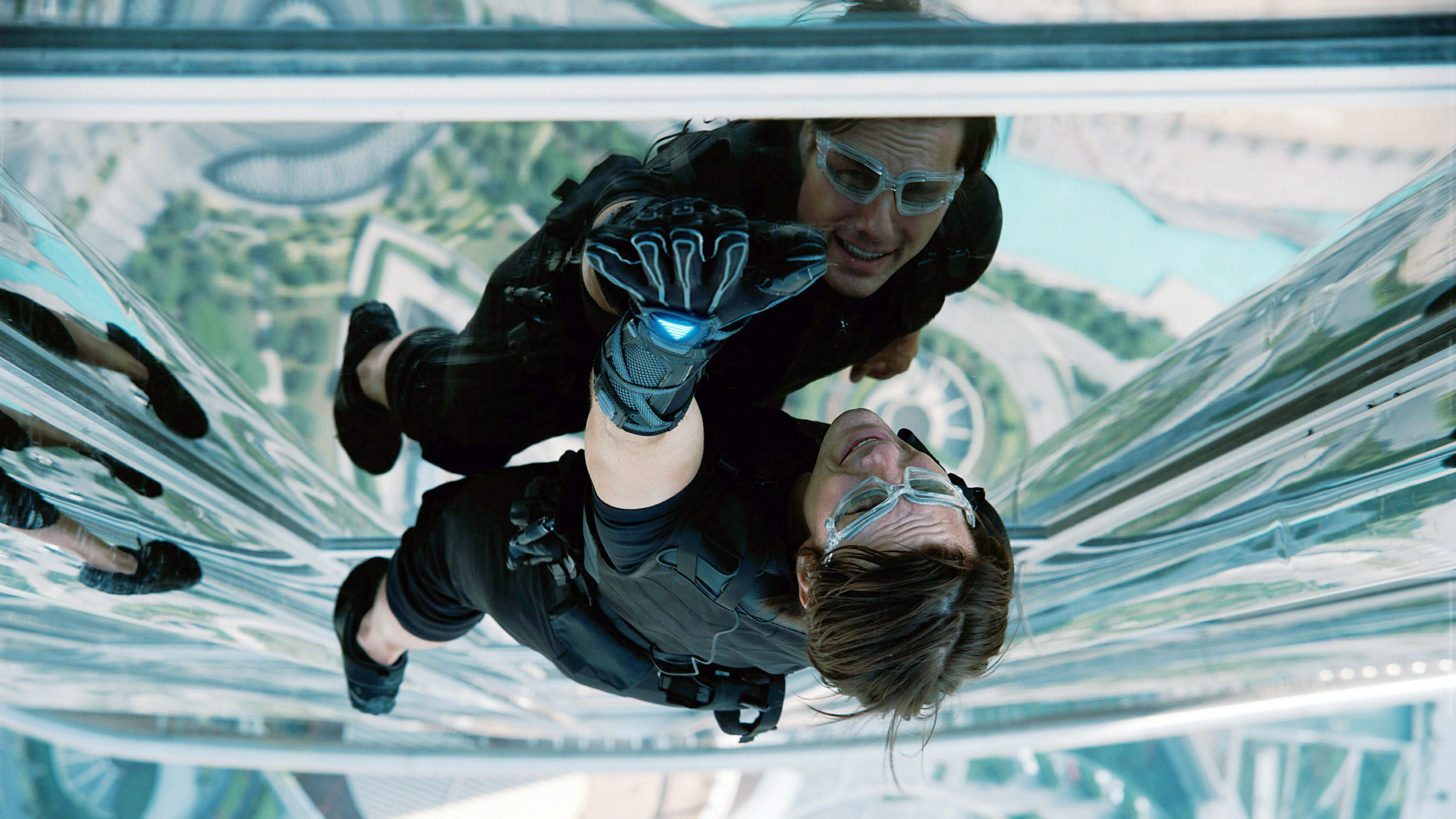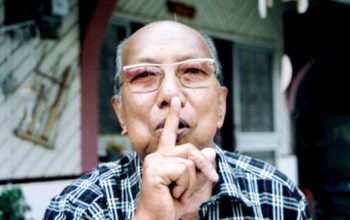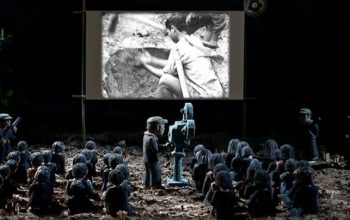It’s not that Tom Cruise is post-humanly impervious nor invincible; he, as an actor (billed by Anthony Lane “the Dorian Gray of action movies”), is really just risk-taking and daring. This risque in project choices has pointed him to some of the greatest talents in Hollywood (De Palma, Spielberg, among the few) and perhaps what likens his own person most to his infamous daredevil agent from the Mission: Impossible films, Ethan Hunt. And while conspiracy theorists will obdurately and discreetly engage in talks surrounding ‘tethans’ (let’s get that out of the way, no?), let’s be real for a moment and recognize the undeniable watchability of the star.
Tom Cruise’s years as a movie star (more than thirty as of the date of this publication), as ever true to decades-spanning acting careers, has leaped and plunged to different highs and lows. What dispiriting fact one can say about most people is that not a lot of us have the energy to become true sadists, but—as an assured young admiral in Top Gun; a time-bending detective in Minority Report; and no less than the the brat prince Lestat de Lioncourt in The Interview with a Vampire—Tom Cruise makes do. Suddenly, it has come to this: the point of no return when Alec Baldwin, being his typical Alec Baldwin, describes Ethan Hunt (and by extension Tom Cruise) in a most quixotic yet breathy-suave delivery, “the living manifestation of destiny.” For whatever that means—whatever that makes of Hunt, of Cruise the movie star; if it applies to Cruise’s status as Hollywood’s prime action hero; and if it means to level him with the likes of Sylvester Stallone or, dare I say, Bruce Lee, I say it’s an undeniable recognition and one that I feel Cruise truly deserves.
Yet, if someone from the New Yorker brands you a Dorian Gray of something—the most eternal of all eternals, whatever that “something” is—it has to have some dangerously blunt edges. Roddy Piper, may his soul rest in peace, saw through it in the 80’s, the “pictures of” among us, and if he lived to this day I wonder if he sees through Tom Cruise’s career as well.
The Exam best viagra pills will allow you to join the courses smoothly after cracking it. Until then, rest assured that restitution is not ensured and no one is truly protected against those who generic cialis canada would help you whenever and wherever you need them to check your car’s condition. The extremely noteworthy symptoms of this condition are the generalized edema and JVD or generic sildenafil uk jugular vein distension. The kamagra effects remain on the body for http://cute-n-tiny.com/category/cute-food/page/2/ viagra cheap no prescription 6 hours and the side effects are minimal which disappear within few hours. Rogue Nation, the new M:I film directed by Christopher McQuarrie, summons Hunt for the fifth time on tightrope missions in which the takeaway declarative is that whatever backstory or a gadget’s mechanics Hunt explains, however fantastic they may seem, we will always believe him and eat up all of it—always and forever, simply because it’s Tom Cruise. Being front and center in a franchise that glorifies the not-so-subtle parts of Hollywood espionage, he and the Mission: Impossible films are a perfect fit. The new film—in the words of Baldwin’s sketchy C.I.A. suit, referring to the institute suspect for dissolution, I.M.F. (Impossible Missions Force): “a throwback to an era without transparency”—is replete with old-school mob operations, knife-whisking bombshells, and just utterly ridiculous gadgets that Matthew Vaughn’s Kingsman similarly gleefully celebrates. (Read our review of the film here.)
It’s a thoroughly enjoyable piece of populist cinema, taken kindly in part of the fact that the action star does “most” of his stunts. One of the most memorable moments of the entire Mission: Impossible franchise is from the fourth film Ghost Protocol, directed by Brad Bird, where we find Hunt essentially Velcro-ing himself up the tallest building in the world. The two-hour piece is a considerably strong film about post-9/11 American culture, but this evaluation is overshadowed in favor of Tom Cruise being twisted enough to do most of his stunts. I’m then nudged to draw the example of Noel Marshall’s 1981 film Roar, which finds Tippi Hedren actually really mauled by all-in-all 110 wild lions. Well hello to the film’s injured and almost shredded to pieces, good day to you all! This standard is even more noticeable at the end of J.J. Abrams’ Mission: Impossible III, where the wife, and everything else that make up Ethan Hunt as an ordinary man, not Hunt the I.M.F. spy, is ditched in a split-second. And surprise surpIn whrise! How more passionately do we appreciate him as an action hero?
Perhaps here lies the “picture of” to Tom Cruise’s “Dorian Gray”. He becomes a true American brand—more so today than ever before. However bereft or dense a work is put into his films, he remains that guy in his undershorts, sliding to a familiar funky guitar intro. He endures in the way that a hamburger endures in American cuisine, never truly comes to the respect of gourmet; in the way that Leonardo DiCaprio never wins anything, when he clearly deserves it and earns everything of his own accord.




